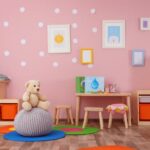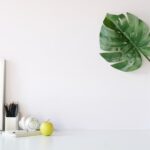With the release of iOS 16, Apple has introduced a whole new world of customization and personalization to your iPhone’s home screen. Gone are the days of a static, cluttered layout – now, you have the power to create a visually stunning and truly unique home screen that reflects your style and personality.
In this article, we will guide you through the process of decorating your home screen in iOS 16, taking advantage of the exciting new features and options available.
In the following sections, we will explore the new customization options in iOS 16, including improved widgets, an enhanced app library, and App Clip icons. We will provide step-by-step instructions on planning your ideal home screen design, from selecting a theme to choosing wallpapers and app icons.
You’ll learn how to customize widgets to suit your aesthetic preferences and discover various methods for creating and using custom app icons. Additionally, we’ll demonstrate how to effectively organize your apps with the App Library feature, explore the benefits of Smart Stacks, and offer guidance on finding high-quality custom wallpapers.
Whether you’re a minimalist enthusiast or someone who loves bold colors and graphics, this article has something for everyone. We’ll showcase popular home screen themes for inspiration and encourage you to make your device truly reflect your individuality.
So let’s dive in – it’s time to unlock the full potential of iOS 16 and transform your home screen into a work of art. Get ready to be amazed by what you can achieve with just a few taps.
Understand the New Features
With the release of iOS 16, Apple has introduced a range of exciting customization options that allow users to personalize and decorate their home screen like never before. This section will provide a comprehensive overview of these new features, highlighting the improvements made to widgets, the app library, and App Clip icons.
Improved Widgets
One of the standout features in iOS 16 is the enhanced widgets. These widgets now come in various sizes and types, offering more flexibility for customization. Users can choose from different widget layouts and select compatible apps to display relevant information directly on their home screen. From weather updates to calendar events, these widgets provide convenience and efficiency by allowing users to access key information at a glance.
App Library
Another notable addition to iOS 16 is the App Library. This feature helps users organize their apps by automatically categorizing them into folders based on usage patterns. Gone are the days of scrolling through multiple home screens in search of a specific app – with App Library, users can easily find their desired apps in one centralized location. Additionally, it allows for a cleaner and less cluttered home screen layout, providing a sleeker aesthetic.
App Clip Icons
iOS 16 also introduces App Clip icons, which are small icons that represent individual features or functionalities within an app. These icons can be placed anywhere on your home screen and act as shortcuts to access specific parts of an app without needing to open it fully. For example, you could have an App Clip icon for ordering coffee from your favorite café or checking flight status for your upcoming trip.
Overall, iOS 16’s new customization options bring both functionality and style to your home screen. Understanding these features will help you make the most out of personalizing your device and create a visually appealing interface that suits your preferences.
Planning Your Home Screen Design
When it comes to personalizing your home screen on iOS 16, having a clear plan is crucial for achieving the desired aesthetic and functionality. Here is a step-by-step guide to help you navigate the process of planning your home screen design and creating a visually appealing layout that reflects your unique style.
- Identify a Theme: Start by determining the theme or overall look you want to achieve on your home screen. Whether it’s minimalist, vibrant, nature-inspired, or retro-themed, having a clear vision will guide your decisions on wallpapers, app icons, and widget styles. Consider your personal preferences and find inspiration from various sources such as social media platforms and design websites.
- Select Wallpapers: The wallpaper sets the foundation for your home screen design. Choose a high-quality image that complements your theme and resonates with you. You can either opt for pre-installed wallpapers or explore online resources for custom options. Additionally, consider how the color palette of the wallpaper will interact with the app icons and widgets you’ll be using.
- Choose App Icons: Your app icons play a crucial role in establishing the overall look of your home screen. iOS 16 allows you to create custom app icons using built-in features like Shortcuts or third-party apps. When selecting or designing your app icons, ensure they align with your chosen theme and exhibit consistency in style and color scheme.
| Step | Description |
|---|---|
| Identify a Theme | Determine the desired look for your home screen. |
| Select Wallpapers | Choose high-quality wallpapers that match your theme. |
| Choose App Icons | Select or design app icons that align with your theme. |
By following this step-by-step guide, you can effectively plan your home screen design and create an aesthetically pleasing layout. Remember to have fun exploring various options and finding inspiration from other users’ ideas. The next sections will delve into customizing widgets, creating custom app icons, and organizing apps with the App Library – all of which are essential steps in achieving a fully personalized and visually captivating iOS 16 home screen.
Customizing Widgets
Widgets are a fantastic way to customize your iOS 16 home screen and add a personal touch. Whether you prefer a minimalistic style or a more vibrant look, the wide range of widget sizes and types in iOS 16 allows you to create a design that suits your style perfectly. Here are some tips on how to personalize widgets and make them aesthetically pleasing.
- Choosing the Right Widget Size: In iOS 16, there are various widget sizes available, including small, medium, and large. Consider the amount of information you want to display on your home screen and select a size accordingly. For instance, a larger widget can showcase more content, such as multiple photos or detailed weather information. On the other hand, smaller widgets work well if you prefer a clean and minimal look.
- Selecting Compatible Apps: Not all apps have widgets available for customization, so it’s important to choose compatible apps that offer widget support. To identify which apps have widgets available, go to the App Store and search for an app you use frequently. Check the app description or screenshots to see if it mentions widget options.
- Arranging Widgets Aesthetically: Once you’ve chosen your desired widget size and selected compatible apps with widgets, it’s time to arrange them on your home screen in an aesthetically pleasing manner. You can place widgets alongside each other or create visually appealing rows or columns by grouping related widgets together.
- Finding Inspiration: If you’re unsure about how to personalize your widgets or need inspiration for design ideas, consider looking at online resources such as social media platforms or forums where users share their customized home screens. You might find interesting layouts or creative uses of widgets that resonate with your own style preferences.
Remember that customizing widgets is not just about functionality but also about expressing your personal style on your home screen. Experiment with different combinations of widget sizes, explore new compatible apps regularly, and have fun making your iOS 16 home screen truly unique.
Creating Custom App Icons
Creating custom app icons is a great way to personalize your iOS 16 home screen and make it truly unique. Whether you want to match a specific aesthetic or simply add a personal touch, this section will provide a detailed tutorial on how to create and use custom app icons using the built-in Shortcuts app or third-party apps.
To get started, you’ll need to download a selection of images that you want to use as your custom app icons. These can be found online or created by yourself using graphic design software. Keep in mind that the ideal size for app icons is 180×180 pixels, so make sure your images are properly sized before proceeding.
Once you have your images ready, you can start creating shortcuts with them using the Shortcuts app. Here’s how:
- Open the Shortcuts app on your iOS 16 device.
- Tap on the “+” icon to create a new shortcut.
- In the search bar, type “Open App” and select it from the available actions.
- Tap on “Choose” and select the app you want to customize.
- Tap on the ellipsis ( ) icon in the top right corner and select “Add to Home Screen”.
- Tap on the thumbnail image that appears and choose “Choose File”.
- Select the custom image from your device’s photo library and tap “Choose”.
Your shortcut should now have a custom icon associated with it. To complete the customization process and add it to your home screen, tap on “Add” in the top right corner.
If you prefer using third-party apps for creating custom app icons, there are many options available in the App Store. These apps provide more advanced features like additional customization options, themes, and pre-designed icon packs.
With these methods, you can unleash your creativity and design unique icons that perfectly match your desired aesthetic for your iOS 16 home screen. Experiment with different styles, colors, and themes to create a cohesive and personalized look for your apps.
Organizing Apps with App Library
The App Library feature in iOS 16 is a game-changer when it comes to organizing your home screen and decluttering it from unnecessary app icons. This section will demonstrate how to effectively use the App Library feature, ensuring that you can find your apps easily while maintaining a sleek and organized look.
Understanding the App Library
When you upgrade to iOS 16, you’ll notice a new page at the end of your home screen called the App Library. This page automatically organizes your apps into different categories, making it easier for you to locate them without cluttering your main home screen.
The App Library has pre-defined categories such as Social, Productivity, Entertainment, and more. When you tap on one of these categories, you’ll see a collection of related apps grouped together. For example, if you tap on the Social category, you’ll find all your social media apps like Facebook, Instagram, Twitter, and so on. You can also search for specific apps directly from the search bar at the top of the App Library page.
Categorizing and Rearranging Apps
To further personalize your App Library experience, iOS 16 allows you to customize app categorization according to your preferences. You can create new folders or change an app’s category by long-pressing on an app icon until they start jiggling.
Once the icons begin jiggling, tap on the “Edit Home Screen” button that appears at the top-right corner of the screen. Now you can move an app icon by dragging it to a desired location or folder within the App Library. To create a new folder within the App Library, drag one app icon over another.
By organizing your apps in this way, you can make sure that they are grouped logically and easy to locate without cluttering up your main home screen pages. Plus, with intelligent suggestions from iOS 16, you can rely on the App Library to surface relevant apps based on your usage patterns, making it even more convenient to access your frequently used apps.
With the newfound knowledge of utilizing the App Library feature effectively, you can now declutter your home screen and maintain a sleek and organized look while ensuring easy access to your apps.
Enhancing with Smart Stacks
Smart Stacks is one of the exciting new features introduced in iOS 16 that allows users to enhance their home screen with dynamically changing widgets. This feature automatically displays relevant widgets based on your usage patterns, making it easier to access the information you need at any given time. In this section, we will explore the benefits of using Smart Stacks and provide tips on customizing them for optimal functionality.
The main advantage of Smart Stacks is its ability to adapt to your usage habits and display widgets that are most relevant to you throughout the day. For example, if you frequently check the weather in the morning, Smart Stacks may display a weather widget at the top of your home screen during that time. As you switch between apps or perform different activities, the widgets within the stack will dynamically change based on their importance and relevance.
Customizing Smart Stacks allows you to tailor it to your specific needs and preferences. You can rearrange the order of widgets within the stack by dragging them up or down. This way, you can prioritize certain widgets that you use more frequently or find most helpful. Additionally, you can choose which apps’ widgets should be included in a stack by tapping on “Edit Stack” and selecting or deselecting specific apps.
To ensure optimal functionality of Smart Stacks, it’s important to keep a few things in mind. Firstly, make sure that you have enabled App Suggestions in your settings so that iOS can accurately predict which widgets would be most useful for you at any given moment. Secondly, periodically review and update your Smart Stacks configuration as your usage patterns may change over time. This will help ensure that the displayed widgets remain relevant and helpful.
Adding Personality with Custom Wallpaper
Finding the right wallpaper is an essential part of personalizing your iOS 16 home screen. With the new update, you have more options than ever to choose from and make your device truly unique. In this section, we will explore various options for finding and using custom wallpapers that will enhance the visual appeal of your home screen.
When it comes to sourcing custom wallpapers, there are several avenues to explore. One option is to search for high-quality images on popular wallpaper websites and platforms such as Unsplash, Pexels, or Pixabay. These platforms offer a wide range of stunning photographs, illustrations, and designs that can add flair to your home screen. Additionally, social media platforms like Instagram and Pinterest are great sources of inspiration where you can find countless images shared by talented photographers and graphic artists.
To ensure that the wallpapers you choose look their best on your home screen, it’s important to consider a few techniques. Firstly, opt for images with a resolution that matches your device’s screen size to avoid any pixelation or stretching when applied as a wallpaper.
Secondly, keep in mind that darker or simpler backgrounds tend to work better as they make it easier for app icons and widgets to stand out. Lastly, consider whether you want a static image or prefer dynamic wallpapers that change over time or based on specific conditions like time of day.
One exciting feature in iOS 16 is the ability to have different wallpapers for both the home screen and lock screen. This means you can experiment with various combinations and create unique visual experiences when unlocking your device or navigating through apps. Don’t be afraid to mix and match different styles, colors, and themes to discover what reflects your personality best.
By taking advantage of these custom wallpaper options and techniques in iOS 16, you can transform your home screen into a visually captivating display that resonates with your taste and aesthetic preferences. Let your creativity shine through as you explore the vast world of wallpapers available online and make your home screen a personal canvas that brings you joy every time you use your device.
Top Home Screen Themes
As iOS 16 offers a multitude of customization options for your home screen, it’s essential to have some inspiration when planning your design. Here, we have curated a collection of popular home screen themes to inspire your creativity and help you create a unique and personalized look.
One popular theme is the minimalist design, which focuses on simplicity and clean lines. This theme often features muted or monochromatic colors, with minimal use of icons and widgets. To achieve this aesthetic, choose a simple wallpaper with a neutral color palette and opt for app icons with clean, minimalist designs. This theme provides a sleek and modern look that appeals to those who prefer an uncluttered home screen.
For those who love to embrace the spirit of different holidays or seasons, holiday-themed layouts are perfect. These themes involve using wallpapers, app icons, and widgets that reflect the festive spirit of special occasions like Christmas, Halloween, or Thanksgiving. Consider using wallpapers featuring holiday symbols or changing the color scheme to match the associated seasonal tones. This type of home screen design allows you to celebrate each holiday in style while creating a festive atmosphere on your device.
If you’re looking for a more visually appealing home screen layout driven by aesthetics, consider creating an aesthetic-driven setup. This theme emphasizes visual harmony by selecting wallpapers, widgets, and icons that complement each other in terms of color scheme, style, and overall feel. To achieve this look effectively, explore various resources for aesthetic inspiration such as social media platforms like Pinterest or Instagram. Experiment with different combinations until you find one that truly represents your personal style.
By exploring these top home screen themes – minimalistic designs, holiday-themed layouts, and aesthetic-driven setups – you can draw inspiration for transforming your iOS 16 home screen into something truly unique and reflective of your preferences. Remember to experiment with different choices until you find what resonates with you best. With endless customization possibilities provided by iOS 16 update, don’t be afraid to let your creativity shine and create a home screen that is as distinctive as you are.
Conclusion
In conclusion, the latest iOS 16 update has opened up exciting opportunities for personalizing and decorating your home screen. With the comprehensive overview of the new customization options available, you now have the knowledge to create a home screen that truly reflects your unique style and preferences.
By understanding the new features such as improved widgets, app library, and App Clip icons, you can take full advantage of iOS 16’s customization capabilities. Planning your home screen design step-by-step, from selecting a theme to choosing wallpapers and app icons, will ensure a cohesive and visually appealing look.
You can further customize your home screen by exploring different widget sizes and types, creating custom app icons, organizing apps with the App Library feature, and enhancing with Smart Stacks. Adding personality with custom wallpaper is another way to make your home screen stand out.
With all this newfound knowledge and inspiration from this blog post, it’s time to start personalizing your iOS 16 home screen. Let your device become a true reflection of your unique style and preferences by implementing the tips and techniques shared here. Get creative and have fun making your home screen a visual delight every time you unlock your device.
Frequently Asked Questions
How do I customize my iPhone home screen iOS 16?
Customizing the iPhone home screen on iOS 16 is a great way to personalize your device and make it feel more tailored to your preferences. To do this, you can change the app icons, create custom app icon layouts, and even choose unique app icons from the App Store. By using apps like Widgetsmith or Shortcuts, you can create aesthetically pleasing home screen designs by adding widgets with different colors and sizes.
Additionally, iOS 16 introduces the ability to hide entire home screen pages for a cleaner look. By long-pressing on any empty space on your home screen, you can access the Edit Home Screen option and start rearranging apps or folders into stacks for easier organization.
How do I edit widgets on iOS 16?
Editing widgets on iOS 16 is a straightforward process that allows for greater customization and convenience on your iPhone. By swiping right on your home screen or accessing the Today View by swiping down from the top of the screen, you will see your widgets displayed in various sizes and arrangements. To edit these widgets or add new ones, simply tap and hold any widget until they enter jiggle mode.
From here, you can select the “Edit” button at the bottom of the widget stack to access additional options. This allows you to resize widgets, add or remove specific ones from being shown, or even reorder them according to your preference. You can also utilize Smart Stacks, which automatically rotate through relevant widgets based on contextual cues throughout your day.
Does iOS 16 have home screen wallpaper?
Yes, iOS 16 does offer an option for setting a customized wallpaper as your home screen background. To change it, go to Settings on your iPhone and select “Wallpaper.” From there, choose either “Choose a New Wallpaper” or “Choose a Photo” depending on whether you want to use one of Apple’s preloaded wallpapers or an image from your personal photo library.
Once you’ve made your selection, you can preview how it will appear on both your home screen and lock screen. It’s worth noting that iOS 16 also introduces the ability to set different wallpapers for each home screen page, allowing for even more personalized customization. Simply navigate to the desired page, enter jiggle mode by long-pressing on any empty space, select the “Edit Home Screen” option, and choose “Set Wallpaper.”

I’m thrilled to be your companion on this exciting journey through the world of home decor and design. With a passion for turning houses into homes and a keen eye for the finer details, I’m here to help you transform your living spaces into beautiful, functional, and meaningful havens.





